Arizona - Condors, Hummingbirds & The Second Spring
Sunday 15th July – Sunday 29th July 2018
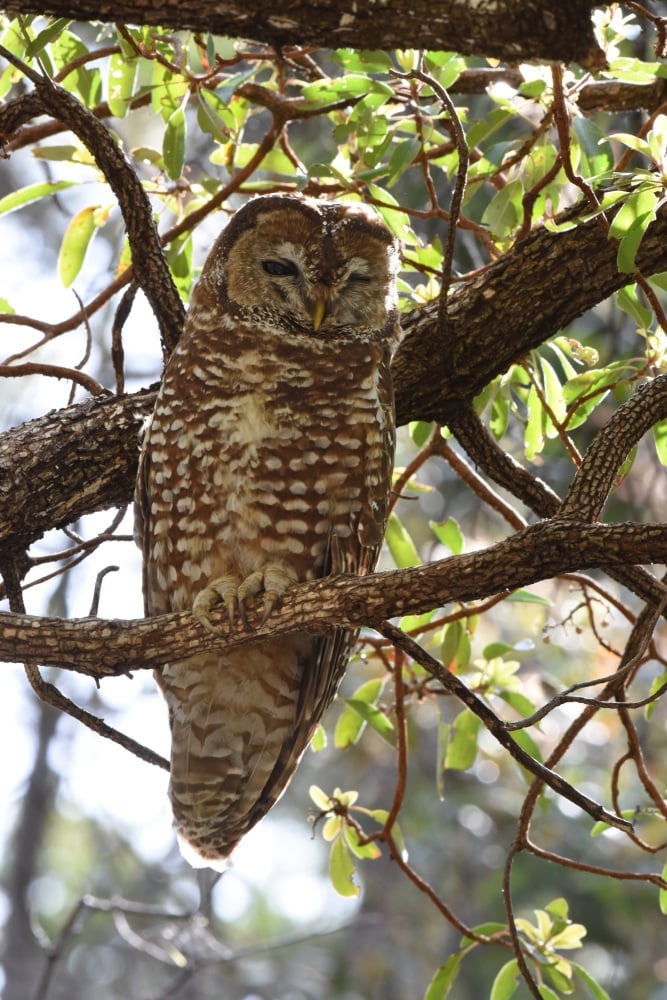 Arizona in late summer may not seem like a natural choice for the visiting birder. Yet those who venture to the south-west in July will be richly rewarded with some of best avian adventures in the United States. Arizona is scenically majestic throughout and composed of a rich mosaic of forested mountain peaks, high desert plateaus, and lowland Sonoran desert. In the middle of July south-west winds carry increasingly moist air from the Pacific bringing cool, welcome mid-summer rains turning the desert green and producing an abundance of flowering plants - Arizona’s ‘Second Spring’. Several key grassland species begin their breeding cycle with the onset of the monsoon which happens to coincide with the peak time for hummingbird diversity. Rare hummers arrive from the south to compliment the local resident species, while south-bound migrants pass through the same locations resulting in up to fifteen species of hummingbird possible on this tour. In addition, about 35 range-restricted bird species occur in the southern part of the state and cannot be reliably found anywhere else in the United States. Although not be taken for granted, Mexican rarities occur somewhat regularly in late summer providing an exceptional climate for a stellar birding tour in the Grand Canyon state. Your leader, James P. Smith, brings a wealth of experience to the trip - this will be his fifteenth tour of Arizona.
Arizona in late summer may not seem like a natural choice for the visiting birder. Yet those who venture to the south-west in July will be richly rewarded with some of best avian adventures in the United States. Arizona is scenically majestic throughout and composed of a rich mosaic of forested mountain peaks, high desert plateaus, and lowland Sonoran desert. In the middle of July south-west winds carry increasingly moist air from the Pacific bringing cool, welcome mid-summer rains turning the desert green and producing an abundance of flowering plants - Arizona’s ‘Second Spring’. Several key grassland species begin their breeding cycle with the onset of the monsoon which happens to coincide with the peak time for hummingbird diversity. Rare hummers arrive from the south to compliment the local resident species, while south-bound migrants pass through the same locations resulting in up to fifteen species of hummingbird possible on this tour. In addition, about 35 range-restricted bird species occur in the southern part of the state and cannot be reliably found anywhere else in the United States. Although not be taken for granted, Mexican rarities occur somewhat regularly in late summer providing an exceptional climate for a stellar birding tour in the Grand Canyon state. Your leader, James P. Smith, brings a wealth of experience to the trip - this will be his fifteenth tour of Arizona.
|
|
Day 1 UK/Europe - Phoenix, Arizona - 15th July
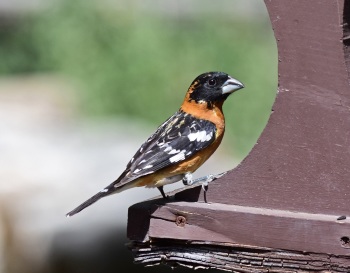 |
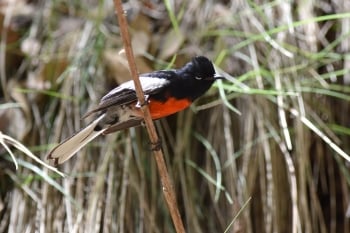 |
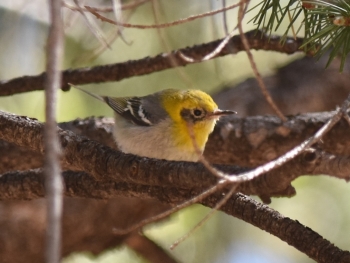 |
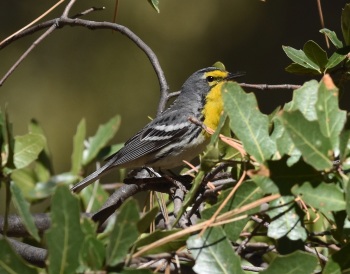 |
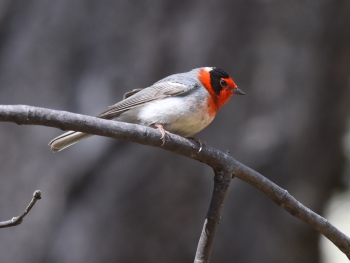 |
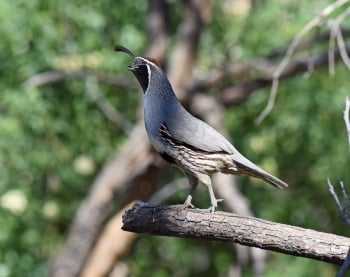 |
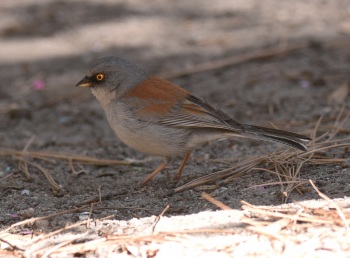 |
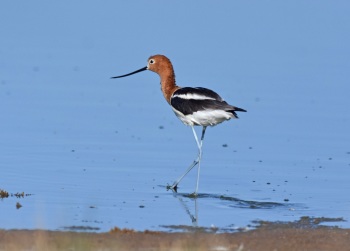 |
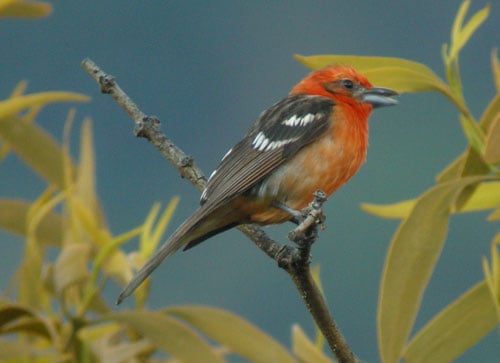 |
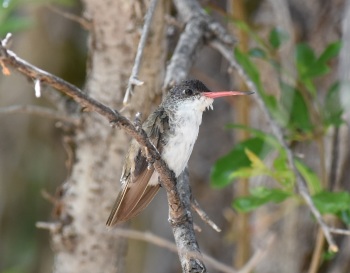 |
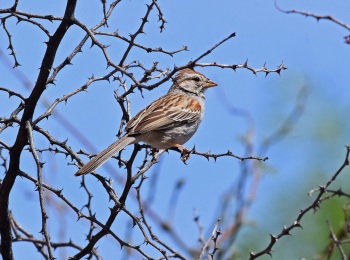 |
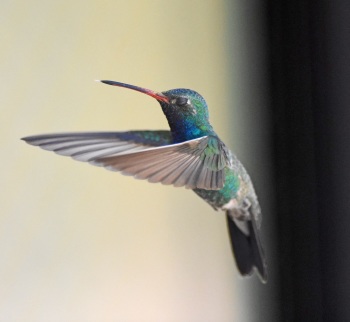 |
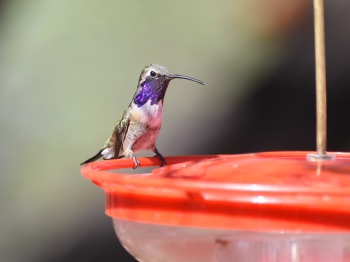 |
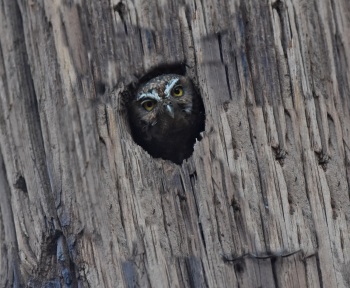 |
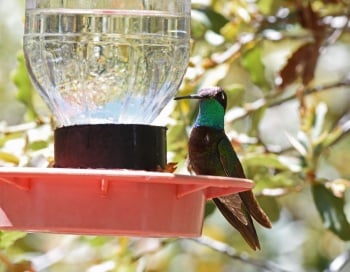 |
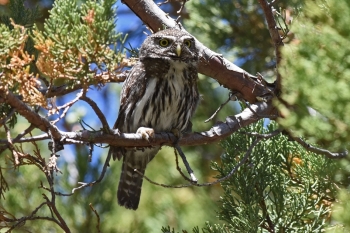 |
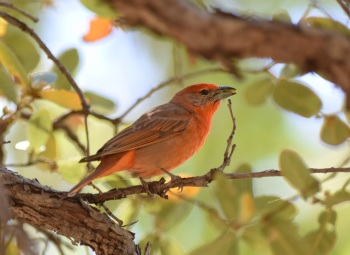 |
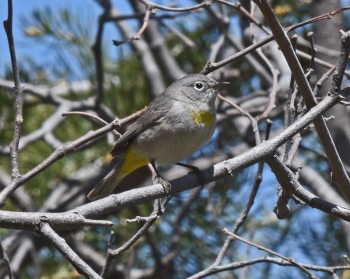 |
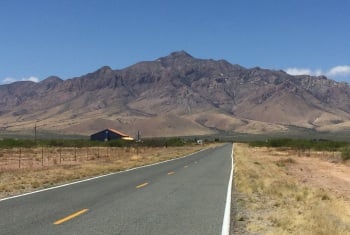 |
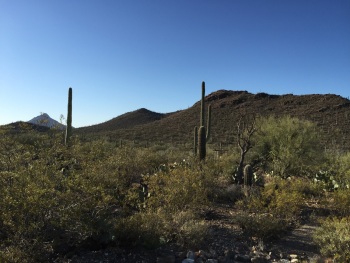 |
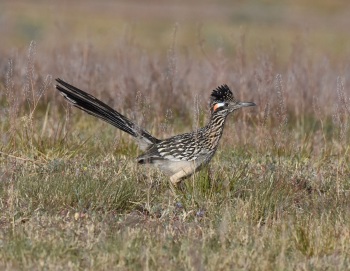 |
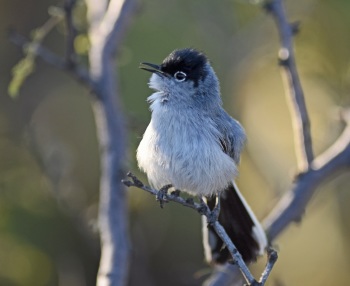 |
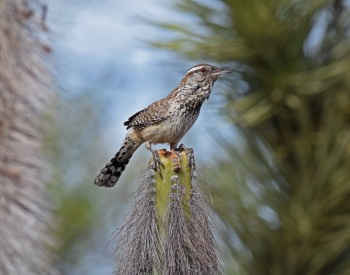 |
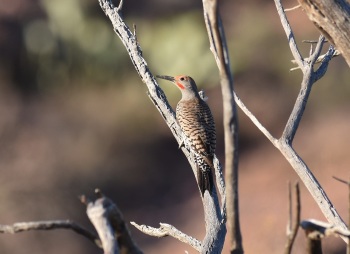 |
Direct flight from UK to Phoenix followed by a 20-minute drive to Tempe, for one-night.
After some light early morning birding on the outskirts of Phoenix, we’ll escape the extreme heat by heading north to Mount Ord and Sycamore Canyon. This area is significantly higher than urban Phoenix and supports a number of foothill-scrub species that could include Woodhouse’s Scrub-jay, Gray Vireo, Juniper Titmouse, Anna’s and Black-chinned Hummingbirds, Rufous-crowned and Black-chinned Sparrows, and Scott’s Oriole. Among the many Turkey Vultures, careful scanning may produce the rare Common Black-Hawk and the slightly more frequent Zone-tailed Hawk both of which patrol the canyons in the area. Phainopepla, Spotted Towhee, Canyon, Rock and Bewick’s Wrens, and Lesser Goldfinch should also be present. In mid-morning we continue north, gaining elevation and generally enjoying the cooler air as we pass the Mogollon Rim and the expansive pine woods of the Coconino National Forest. Commoner species should include Hairy Woodpecker, Mountain Chickadee, Pygmy Nuthatch, Western Bluebird, (Audubon’s) Yellow-rumped Warbler and Dark-eyed Junco. Just before we reach the pleasant University town of Flagstaff we should have time to scan Mormon Lake which can be good for Western and Clark’s Grebes, gulls and terns, as well as Sora and Virginia Rails though much will depend on the water levels. The scrub surrounding the lake may harbor Western Meadowlark, Green-tailed Towhee, Black-headed Grosbeak and Lazuli Bunting. Impressive herds of Elk inhabit the area too, along with Mule Deer and Pronghorn. Two nights in Flagstaff.
Day 3 The Grand Canyon
We depart early for a full day exploring the Grand Canyon. The journey time from Flagstaff is about 90 minutes to the south rim, closer to three hours to the north rim. Our choice will depend on recent condor activity. No doubt we’ll make some roadside stops for the often excellent birding en-route. In particular, raptors might include Golden Eagle and Prairie Falcon and the juniper/sage brush habitat may yield Gray Flycatcher, Blue-gray Gnatcatcher, Black-throated Gray Warbler, Vesper and Brewer’s Sparrows. As we approach the canyon rim Pinyon Jay and Red Crossbill should also be possible. Once inside the National Park we’ll join the hordes of tourists enjoying the awesome wonder of the Grand Canyon. The south rim has tens of miles of publicly accessible view points and vistas and we’ll take in as much as we can at the same time keeping one very important species in mind - California Condor. A highly successful reintroduction program means that over 70 California Condors are now present in Northern Arizona/Southern Utah including several young birds raised from nests in the wild. Although not guaranteed, we shall certainly make a big effort to find the largest land bird in North America!
A busy day ahead as we first visit some of the Ponderosa Pine Canyons north-west of Flagstaff. More specific targets will include American Three-toed Woodpecker, Painted Redstart, Olive and Hermit Warblers, and Townsend’s Solitaire. We leave in mid-morning heading east across the vast Navajo Indian Reservation and the Painted Desert before passing through the Petrified Forest National Park. Birds are relatively few here but could include Prairie Falcon and Scaled Quail whilst the gardens around the tourist sites can harbor some interesting migrants such as Willow Flycatcher, MacGilliveray’s Warbler and Bullock’s Oriole. We head south in early evening enjoying a classically spectacular Arizona sunset as we drive toward the White Mountains. Two nights in Springerville.
We’ll have time for further exploration of the White Mountains before heading south passing through the state line in New Mexico. The day will give us a fine opportunity to catch up with any target species missing from the previous two days. In addition ‘the Whites’ are often a good place to find Red-faced and Virginia’s Warblers, Dusky and Willow Flycatchers, Plumbeous and Cassin’s Vireos, and Green-tailed Towhee. Night in Lordsburg, NM.
We depart early for a ‘big day’ in the Chiricahua Mountains. The approach to the sleepy settlement of Portal could produce Scaled and Gambel’s Quails, Lesser Nighthawk, Black-tailed Gnatcatcher, Verdin, Cactus Wren, Curve-billed and Crissal Thrashers, Greater Roadrunner and Black-throated Sparrow whilst Portal itself offers some of the finest local birding in Arizona with Western Screech-Owl, Broad-billed and Blue-throated Hummingbirds, Acorn and Ladder-backed Woodpeckers, Western and Cassin’s Kingbird, Loggerhead Shrike , Pyrrhuloxia and Hooded Oriole among many others. From there we head into Cave Creek Canyon, surely one of the most scenic spots in southern Arizona, and begin the search for a number of key species including Montezuma Quail, Elegant Trogon, Arizona Woodpecker, Mexican Jay and Painted Redstart. As we climb the narrow mountain roads towards Barfoot Peak (8,800 feet) we’ll make several stops for Band-tailed Pigeon, Yellow-eyed Junco and the main target of the day, Mexican Chickadee. The general area is excellent for high elevation species chief among them being Northern (Mountain) Pygmy-Owl, Cordilleran Flycatcher, Pygmy and Red-breasted Nuthatches, and Olive Warbler while the chickadee flocks may well harbor migrant and local warblers such as Hermit, Townsend’s, Red-faced and Grace’s Warblers. In recent years, Short-tailed Hawk has bred in the area and we’ll carefully check all the raptors we see. In mid-afternoon we’ll begin our descent over Onion Saddle down the western side of the Chirichahuas passing through Pinery Canyon along the way. The latter is a good spot for rarities and has hosted Slate-throated Redstart in the recent past though Hermit Thrush is rather more likely! After a full day in the mountains we leave the Chiricahuas passing through rolling foothills and grasslands towards Willcox. The drive may be punctuated with interesting roadside birds such as Swainson’s Hawk, Chihuahuan Raven and Bendire’s Thrasher. Night in Willcox.
We begin the day in the railroad town of Willcox. We’ll find good birds around the town including Harris’s Hawk, Vermilion Flycatcher, Crissal Thrasher, and Lark Bunting. Cochise Lake is close to town and is one of the best spots for water birds on the tour. A broad selection of shorebirds should be possible depending on the water levels and these might include Black-necked Stilt, American Avocet, Marbled Godwit, Baird’s, Western and Least Sandpipers and impressive numbers of Wilson’s Phalaropes. Though not the best time of year for waterfowl, Cochise Lake may harbor Cinnamon and Blue-winged Teals, Northern Shoveler, Mallard, Mexican Duck, Redhead, Lesser Scaup and perhaps Ruddy Duck. Smaller pools may yield White-faced Ibis and Black-crowned Night-heron. Northern Harriers often quarter over the surrounding grasslands. After lunch in Willcox we’ll head west towards Benson where a small population of Mississippi Kites breeds close to St.David’s monastery. Other birds of interest could include Tropical Kingbird, Bronzed Cowbird and Blue Grosbeak. We then head south for Sierra Vista, hopefully checking into our hotel with enough time for some early evening birding in one of the major canyons above the town. Three nights in Sierra Vista.
The plans for the next three mornings will be dictated by weather and prevailing monsoon conditions. Typically, the morning is fine until cumulus clouds start to bubble up around noon with the potential for some heavy thunderstorms in the afternoon. The Huachucas have a number of extremely important key birds for us some of which will not be readily available elsewhere on the tour; Greater Pewee, Buff-breasted Flycatcher and Lucifer Hummingbird being three examples. In addition, the area can be exceptionally good for rare species from south of the Mexican border and only reach Arizona by virtue of the Sierra Madre mountain range; Rufous-capped Warbler, Tufted Flycatcher, Plain-capped Starthroat, Slate-throated Redstart and Flame-colored Tanager all have the potential to be found during the tour’s time frame. Still rare but rather more frequent are some of the scarcest hummingbirds in the US with Magnificent, Beryline and White-eared Hummingbirds among our main targets. Ramsey, Miller, Carr and Ash Canyons will all be visited during our stay and we may even try for crepuscular species at night including Whiskered Screech-Owl and Common Poorwill. We’re also hopeful of finding (Mexican) Spotted Owl during daylight hours.
After a final morning in the Huachuca Mountains we head west through the Sonoita Grasslands with a couple of stops en-route. Burrowing Owl, Cassin’s, Grasshopper and Savannah Sparrows are possible by the roadside. By noon we’ll be in the charming little town of Patagonia, home to the famous Paton’s yard and its feeders. Key species in the area should include Black Vulture, Thick-billed Kingbird, Costa’s and Violet-crowned Hummingbirds and there will be plenty to keep us busy aside from those species with Gila Woodpecker, Inca Dove, Song Sparrow, Northern Cardinal and Spotted Towhee. Further south at Patagonia Lake yet more species of interest include Northern Beardless-tyranulett, Rufous-winged and Botteri’s Sparrows, and Varied Bunting. Two nights in Nogales.
We leave Nogales early and embark on our journey to California Gulch in the Parajita Wilderness. The gulch is the only somewhat reliable place in the USA for Five-striped Sparrow, a Mexican species with a tiny population just north of the border in southern Arizona. The drive will involve about 18 miles on dirt roads but is well worth the effort as California Gulch may also harbor Gray Hawk, Yellow-billed Cuckoo, Dusky-capped and Ash-throated Flycatchers. With increasing reports of Common Black-hawk, Black-capped Gnatcatcher and Rufous-capped Warbler we should also be ready for the odd rarity. Montezuma Quail is frequently seen in the canyon and along the Ruby Road. If the weather permits, we may opt to bird California Gulch at the end of the day, not only to look for the above mentioned species but also to try for Buff-collared Nightjar, recently established as a rare summer resident in the area. Elf Owl, Mexican Whip-poor-will and Common Poor-will might also be possible at night.
With a relatively short distance between Nogales and Green Valley we’ll have more time in the field and less time in the vehicle today. The first key location will be the Anza Trail at Tubac, a beautiful riparian area full of mature Cottonwoods and Mesquite Scrub. Tropical Kingbird, Summer Tanager, Abert’s Towhee, Bell’s Vireo, Bridled Titmouse, Bushtit, Cedar Waxwing, Lucy’s Warbler and Phainopepla will all be worth looking for. This trail has recently become synonymous with good rarities and Ferruginous Pygmy-Owl, Rose-throated Becard and a long staying Sinaloa Wren have all been found in the last couple of years.
After lunch we’ll bird the famed Madera Canyon passing through lowland grasslands, then foothills-scrub, mature oak woodland and pine forest. The transition through multiple ‘life zones’ with give us a broad range of species with Eastern (Lillian’s) Meadowlark, Brown-crested and Sulphur-bellied Flycatchers, Wild Turkey, Mexican Jay, White-breasted Nuthatch, Brown Creeper, Hepatic Tanager, and Elegant Trogon possible. Madera Canyon is most certainly a hotspot for rarities with Aztec Thrush, Plain-capped Starthroat and Flame-colored Tanager found in recent years. Night in Green Valley.
We will keep our options open for the last full day of the tour. It’s possible that one or two key species will have proven elusive, some of which might well be possible, with a detour, on the way to Phoenix; Common Black-hawk, Harris’s Hawk, and Gilded Flicker could well feature in the day’s plans if there are still gaps on the tour list. Night in Tempe, Phoenix.
Depending on our flight times there may an opportunity for some early morning birding in urban Phoenix. Rosy-faced Lovebird, for example, has been ABA countable for several years and is an established resident in the Phoenix area. Other common urban birds should include White-winged and Inca Doves, Gila Woodpecker, Cactus Wren, Curve-billed Thrasher, Anna’s Hummingbird and Verdin. Sky Harbor International Airport is a mere twenty minute drive from the hotel allowing plenty of opportunity for a last minute shower before the long flight back to the UK.
Leader: James P. Smith.
Airfare: £800.00 - £950.00 (Approx) - UK/UK
Group size: Maximum of 8 with 1 leader.
Included in cost: Accommodation in comfortable hotels/motels with en suite facilities, transport throughout, all reserve entrance fees and guiding services.
Not included: International airfare, ESTA fee, insurance, drinks, tips, and items of a personal nature. In keeping with other US tours, food and drink is not included in the overall tour price. Traditionally we eat lunch and the evening meal as a group but this is purely optional. There are usually plenty of food options available. Allow about $45 per day depending on your individual requirements.
Accommodation: comfortable, air conditioned rooms of a good standard with twin and single options available, all en-suite. Most accommodations offer in-room coffee/tea and sometimes a free continental breakfast in the hotel lobby.
Tour Code: a moderate degree of fitness is required for this tour. Much of the tour takes place at elevation where we intend to walk moderate distances on established trails. Some of the walks may be up to three miles in length along rugged, undulating trails. However, the pace will be gentle and the longer walks often produce some of the best birds and wildlife of the entire tour. Temperatures can vary from extremely hot (100 deg F/38 deg C) in Phoenix to cool (58 deg F/15 deg C) in the White Mountains. The tour takes places in the ‘monsoon season’ and thunderstorms are possible on each day of the tour. A variety of field clothing is recommended including lightweight rain gear. Casual clothing is fine for evening meals though many eating establishments crank-up the air conditioning so a sweater may be worth carrying at meal times. Biting insects are relatively few but can be present in sheltered canyons and in the evenings when night birding. A good insect repellent is recommended. Rattlesnakes are common in Arizona although you wouldn’t know it. We’ll be lucky to see one and we generally come across only one or two during the course of a two week tour. Large mammals include Elk and Black Bear and we are likely to see both – at a respectful distance. Considering Arizona is a land-locked state, the birding is remarkably rich and diverse. Expect to see around 240 species during the tour.
Arizona Photo Gallery
Arizona 2016 Tour
| BOOK THIS TOUR |
Receive our e-newsletter:
Join the Zoothera e-mailing list for up-to-date news on new tours, tour reports and special offers.
e-mail [email protected] to sign up.
